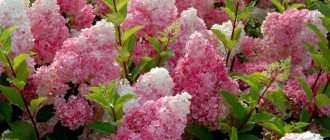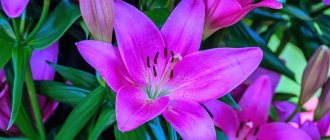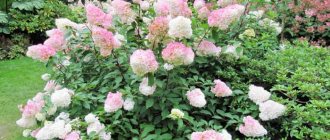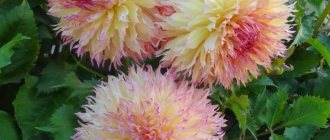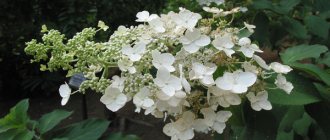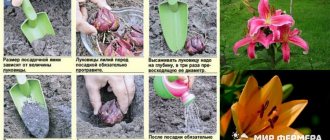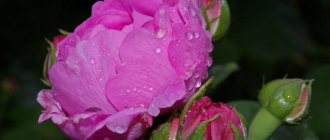Description of pink hydrangea
Garden pink hydrangea is a shrub of the Deciduous family. Often used to decorate public gardens, parks and, of course, garden (country, village) plots. There are two types of such hydrangea - tree and paniculate. In Russian realities, the first option is most often planted.
Hydrangea pink
Origin
The plant is native to East Asia. The largest number of species grows in Japan and China. It was brought to Europe only in the 14th century - to decorate the gardens of representatives of the upper classes of England and France.
At the beginning of the 16th century, hydrangea appeared in Russia, but only in two colors - white and pink.
Peculiarities
Delicate pink hydrangea blooms magnificently, with large inflorescences. Small flowers in the center, larger ones on the sides. It is this feature that makes the plant so interesting and unusual.
Interesting fact! The shade of the inflorescences of one bush can change from white to pink, this is due to the influence of a special substance - anthocyanin. At the same time, in acidic soil the flowers may turn completely blue.
The tree type of plants is most often used. The shrub grows up to 1 meter in height. The leaves have a rich green color, an elongated shape, closer to an oval, and last until mid-autumn (the first frost).
Pink hydrangea bush
Pros and cons of the variety
Hydrangea is distributed throughout the country. The plant has certain advantages:
- wide range of colors and shades;
- withstands wintering without replanting;
- rapid regeneration (after temperature changes, pruning, and other negative aspects);
- immune to insects and diseases.
Disadvantages include care, soil requirements and other specific disadvantages inherent in specific varieties.
Winter hardiness
North American varieties, which appeared in the 80s of the twentieth century, can withstand temperatures down to -15 ° C. Species bred in Europe overwinter at -20 °C. Frost-resistant species include:
- Firewox Pink (“pink fireworks”);
- White Ball (“white ball”);
- Blue Haven (“blue sky”);
- Red Sensation (“red sensation”) and others.
These varieties are suitable if winter temperatures allow. Otherwise, a transplant or special shelter will be required.
Origin and appearance of pink hydrangea
Garden pink hydrangea has a luxurious appearance, but at the same time it is easy to care for. The southern and eastern parts of Asia are considered the birthplace of the culture. It also grows in the north and south of America. There are especially many hydrangeas found in Japan and China. The flower can also be seen in Russia. It grows well in the Far East.
Pink hydrangea has excellent decorative properties
Hydrangea flowers resemble balls in appearance. They are large paniculate inflorescences that are located on the top of the branches. Most hydrangea varieties have white flowers. However, the large leaf crop can be decorated with pink, purple and blue buds.
Important! Depending on the composition of the soil, the color of the buds may change. If the plant is planted in acidic soil, the flowers will be blue or blue, while alkaline soil will produce a pink tint.
Hydrangea is characterized by beautiful flowers
Varieties and varieties of pink and soft pink hydrangeas
There are many varieties of hydrangea with pink inflorescences. In the Russian climate, the following varieties performed best.
Kumiko
Hydrangea blue or blue - planting and care in open ground
The official name of the variety is Hydrangea macrophila "Kumiko". The ornamental shrub has straight stems and shoots, at the ends of which large spherical inflorescences are formed.
The variety is considered relatively frost-resistant (withstands down to -18 ° C), but requires special covering for wintering in northern latitudes.
Attention! This variety of hydrangea, unlike others, tolerates a little shade, so it is permissible to plant bushes near the house or trees.
Bella Anna
The variety differs in the size of the inflorescences - up to 20 cm (usually about 25 cm). The tree grows up to 1.3 m in height. The period of active flowering reaches three months.
The leaves are light green in color with clearly visible veins; after the season they acquire a yellowish tint.
For reference! The variety is picky about the choice of soil, loves abundant watering, and is loved by landscape designers.
Bella Anna
Sweet Fantasy
A large-leaved variety of pink hydrangea with the scientific name Hydrangea macrophylla Sweet Fantasy.
The plant reaches a height of no more than 1.2 m. The brightest color is red with rich splashes along the edges.
It blooms on the shoots of the current and next seasons. Recovers quickly after wintering.
Hanabi Rose
Low variety - maximum height 80-100 cm. The inflorescences are flattened, reaching 25 cm in diameter. The petals are pale pink, slightly terry to the touch. It quickly forms shoots and delights with flowers on the stems of the current and last seasons.
Pink pinkushen
Tree type hydrangea. The bush grows spreadingly, with a large number of shoots.
Pink Pincusion blooms for three months - from June to August. Often used to decorate parks and areas. The diameter of the inflorescences is no more than 15 cm.
For reference! The decorative version of the variety can withstand frosts down to -25 °C.
When and how to prune hydrangea?
Do I need to prune my hydrangea? Strictly speaking, this procedure is not vital for it; the plant is quite viable even without pruning. However, gardeners who prefer a well-groomed appearance of their plot and properly formed bushes will not agree with us and strongly recommend not to neglect this procedure.
You can leave the young bush untouched for up to 2-3 years; then you will have to start molding it.
This is done annually in the spring, before active sap flow begins, and different types of hydrangeas have their own pruning characteristics.
- For large-leaved hydrangea, sanitary pruning is sufficient, when all frozen, broken and thickening shoots are removed.
- In tree hydrangea, all weak and crooked shoots, as well as three-year-old (and older) branches, are removed to the base. Young growths of the current year are greatly shortened, leaving only a few buds. The weaker the shoot, the shorter it is cut.
- Pruning paniculata hydrangea is more gentle than in the previous case. The shoots growing inside the crown are removed, and the young growths are shortened to 1-3 pairs of buds.
Also, all hydrangeas would benefit from “lightweight” autumn pruning with the removal of dried inflorescences and excessively overgrown shoots, which can simply break off in winter under the snow cover.
Planting in open ground
It is necessary to familiarize yourself with the rules for planting and caring for pink hydrangea in open ground in advance - the plant is picky about choosing a location and does not tolerate frequent replanting.
Selection and preparation of site and soil
Pink hydrangea - how to care for pink hydrangea in the garden
Place is the first and quite important point. Hydrangea of all varieties does not tolerate shade (some tolerate partial shade - a rare feature), constant replanting, and as a result, it stops growing and blooming. The soil should be clayey and fairly acidic. Peat, sawdust or pine needles can be added to neutral soil.
Attention! The plant does not tolerate direct sunlight - in such places the flower will not have enough moisture. Therefore, it is important to choose a sufficiently lit, but not bright place (for example, next to a larger tree).
The planting hole is prepared in advance - 50*40*40 cm. Fertilizers (humus, river sand, superphosphates and others) are added.
Planting hydrangea
Which plants are best to plant next to?
Hydrangea is a large-leaved perennial shrub, so you should not plant annual varieties nearby (unless you want to renew the design of the site every year). It is important to take into account not only the color scheme of the “neighbors”, but also general compatibility - similar requirements for soil, frequency and abundance of watering, and other points. Most often used:
- ferns - allow you to create an interesting foliage pattern on several levels;
- periwinkles, ivy - low-growing varieties frame the bottom of hydrangeas;
- the mantle is soft - they have lighter leaves, adding shine to the composition.
Other options are bergenia, hostas, lilacs, mock oranges, hydrangeas and many others. The most colorful combination is considered to be cereals (hakonechloa, falaris, millet).
When and how to plant
In the southern regions and Moscow region, hydrangea is planted in the fall, in Siberia - only in the spring.
In a pre-prepared hole, a small mound is formed, where the seedling is placed - the roots are carefully distributed around. The planting hole is completely filled up, abundant watering is required.
Culture propagation
Hydrangea: planting and caring for it in the open ground
Like all species in the genus, Pink hydrangea propagates by cuttings, layering, and seeds.
Cuttings
Use young, not yet woody tops of the bush with two or three leaf nodes. Leave 2-3 cm from the bottom to the cutting site and make a cut at an oblique angle. The leaves of the first node are removed completely, and the rest are cut in half. It is not recommended to remove all the foliage from cuttings, because photosynthesis must occur in the planting material. In addition, the plant spends less energy on the development of green mass, and uses it for rooting. The top of the cutting is also cut off, but at a right angle.
The planting container is filled with infertile soil, or sand can be used. The cuttings are buried 3-4 cm, sprayed with water and created a greenhouse effect by covering them with any type of covering. Next, they are removed to a place protected from bright light until rooting.
You can use a transparent plastic cup for planting
Important! Watering of planting material is carried out only by spraying.
You can use a clear plastic glass for planting to observe the development of roots. As they grow, transfer the seedling to a larger pot.
Reproduction by layering
With this method of propagation, it is worth considering that the plant must take root before the onset of cold weather. Therefore, the best time for layering is spring and early summer. The soil around the bush is loosened and a depression 3-5 cm wide is made. Before the buds bloom, the lower shoot of the bush from last year is placed in it, sprinkled with earth and secured so that it does not rise. The top of the branch is left above the ground, tied in a vertical position to a support. As the vertical shoots that appear on the layer grow, they spud it up. By autumn it has its roots. At this time or in the spring, new plants can be separated from the mother bush and placed in a bed to strengthen the root system.
Propagation by seeds
Hydrangea seeds are small and numerous. They are formed in boxes 1-3 mm in size on inflorescences in the autumn. Sowing is carried out at the same time of year.
Soil composition for sowing:
- leaf soil (4 parts);
- peat (2 parts)
- river sand (1 part).
Growing Hydrangea from seeds is a labor-intensive process.
Landing technique:
- The seed is lowered.
- Lightly sprinkle with planting compound.
- Moisturize by spraying.
- Cover with transparent material to create a greenhouse effect.
- Place in a non-sunny, warm (14-20 0C) place until seedlings appear.
Important! The substrate with seeds should always be moist.
Shoots appear in 1-1.5 months. At this point, you can remove the shelter and place it in a bright place, but not in direct sunlight.
Growing technique:
- at the stage of formation of cotyledon leaves, plants dive;
- when three or four permanent leaves appear (usually in May), the picking is repeated, and the plants are transferred to separate pots of small diameter;
- from the moment of the second pick, hardening is carried out, taking it out into the fresh air during the day, out of access to drafts and direct sunlight, and in the evening returning it to room conditions.
In winter, seedlings are kept in a cool but bright room. In summer, outdoor conditions are preferable. It is recommended to remove the resulting buds in order to leave strength for the plant to strengthen the root system. The seedlings remain at home for 2 years. Then in the spring follows planting in open ground. In areas with cold climates, the planting period can be postponed to autumn.
Growing Hydrangea from seeds is a labor-intensive process. Therefore, it is used mainly in species plants and for breeding.
Conditions for planting in open ground
The composition of the soil for planting does not differ significantly from the composition for planting large-leaved and paniculate varieties. For a permanent place to grow Pink hydrangea, add the following to the soil:
- drainage (broken brick, crushed stone, expanded clay) 6-8 cm;
- superphosphate (60 g);
- potash fertilizers (20 g);
- nitrogen fertilizers during spring planting (20 g);
- peat (depends on acidity, the lower it is, the greater the proportion);
- humus (8-10 kg) to feed the seedling.
Planting in open ground
Important! Clay is added to the sandy soil in a layer of 3-4 cm. It is strictly forbidden to add fresh manure and lime. The plant may die. The size of the planting hole depends on the size of the plant's root system.
Plant care
Hydrangea Grandiflora - description, planting and care in open ground
Pink hydrangea needs balanced nutrition and care. If all requirements and rules are met, the plant will produce lush and bright flowering.
Watering
The shrub loves regular and abundant watering - up to 30 liters every week. Before the procedure, the soil is dug up - about 5-10 cm.
In addition to moistening the soil, it is necessary to spray the foliage with a spray bottle.
Fertilizer and feeding
It is especially important to provide additional nutrition only to planted plants. Mineral fertilizers are applied every spring - potassium sulfate is required. The second time - at the moment the buds appear, then in the fall.
Mulching and loosening
The right mulch will retain moisture in the soil, and timely loosening will provide the necessary amount of oxygen to the roots. Suitable for mulching hydrangeas:
- shredded bark (presence of o or “composted” is important);
- coffee grounds - oxidizes the soil, can be taken from a cafe or coffee shop;
- peat moss;
- pine straw and others.
It is important to consider that certain types of mulch reduce the acidity of the soil, which affects the color of the buds. Loosening is carried out regularly at a distance of 50-60 cm around the bush. Depth - no more than 10 cm, so as not to damage the root system.
Mulching hydrangeas helps retain moisture in the soil
Trimming
The main pruning - the formation of a bush - is carried out in early spring (late March). The pruning shears must be treated with a disinfecting solution and sharpened.
Important rules:
- It is unacceptable to cut off branches manually;
- the weather should be sunny and calm;
- stumps and cuts must be treated with garden varnish or its substitutes.
Cut at a slight angle. If the bush has already grown, you cannot prune all the branches at once; it is better to do a complete pruning in stages.
Preparing for winter
Most varieties of pink hydrangea require additional shelter for the winter. Main methods:
- sprinkling with leaves or sawdust;
- construction of “boxes” for each bush from boards or mesh, covered with polyethylene or other covering material on top.
Attention! With the onset of spring, it is not recommended to open the plants immediately - if mold is found, it is simply washed off (it does not harm the bushes).
How should you water a hydrangea?
It was no coincidence that European botanists and taxonomists gave the plant the name Hydrangea, which is translated from Greek as “vessel of water.” Hydrangea is a remarkable water-drinker and simply cannot tolerate drying out of the soil, although stagnant moisture is also contraindicated for it. The soil should be constantly moderately moist throughout the entire depth of the roots.
The best way out would be to regularly water the hydrangea abundantly - for the average summer in our middle zone, this is about two buckets for each adult bush once a week. If the weather is drier, double the watering frequency.
Also, hydrangeas do not like sharp fluctuations in humidity levels - for example, rare but very abundant watering during drought.
Reproduction
The easiest way is to buy seedlings in special receivers. The disadvantages are the cost, lack of the desired variety. Hydrangea can be propagated independently using the following methods.
Growing from seeds
The seeds of the plant do not require pre-treatment; they are immediately planted in pots (boxes, etc.). The soil is moistened, the seeds are not buried, covered with film or glass. The first shoots appear on average after three weeks.
Cuttings
The optimal way to propagate pink hydrangea is by cuttings. The time of bud formation (mid-July) is considered suitable. They use a green cutting - part of the stem with leaves and buds.
Attention! Cuttings are cut only from young bushes. If there are “old” plants on the site, “rejuvenating” pruning is first carried out.
Cuttings of hydrangea at home
Dividing the bush
This method is used only during plant transplantation. It is permissible to separate bushes of all types of hydrangea (except paniculata).
Period - spring (with the onset of warmth, but before flowering begins). First, water the bush well, then dig it up. The roots are washed from the ground and separated.
By layering
The method is used in early spring, before bud formation. Stages of work:
- Hill up the bush and level the ground.
- Create radial furrows, no more than 2 cm deep.
- Place one stem in each, sprinkle, but leave the top on the surface.
Attention! To prevent the stems from “popping out,” they are sprinkled with earth or pinned with wooden cuttings. During the summer, the sprinkled shoots are watered, achieving light soil moisture.
When and with what to fertilize hydrangea?
Feeding hydrangea is also necessary if you want to admire lush flowering bushes.
In the spring, after the end of frost, feed the hydrangea with any specialized industrial complex fertilizer (Flower Paradise, Bona Forte, Pokon, Agricola Aqua). A self-prepared mixture of 30-40 g of superphosphate, 20-25 g of ammonium sulfate or urea and 30-35 g of potassium sulfate is also suitable.
If you do not live in the warmest climate, to enhance the resistance of plants, you can spray them on young foliage with preparations such as Epin Extra or Zircon.
Plan the second application of fertilizers for hydrangea for the period when budding begins - 60-80 g of superphosphate + 40-45 g of potassium sulfate.
At the end of summer or beginning of autumn, treat each plant bush with 15-20 kg of compost or rotted manure.
How to change the color of a pink hydrangea
The petals of a plant can change color due to certain chemical reactions - white can turn pink, then blue. Homemade ways to change the color of inflorescences:
- watering with diluted aluminum salt, citric acid - allows you to get blue and blue colors (the rarest);
- adding dolomite flour and lime changes the color from white to pink.
In the first case, the acidity of the soil increases, in the second it decreases, the soil becomes more alkaline.
Application in garden design
In garden design, Bouquet Rose hydrangea is used in several variations:
Hydrangea large-leaved bouquet rose planting
- planted singly in flower beds, near gazebos, along the edges of the flower garden;
- grown in groups in combination with other varieties, creating a colorful hedge;
- combined with low-growing decorative deciduous crops - junipers, hosts, heather and mosses.
Problems during cultivation
If the plant exhibits poor growth, insufficient or absent flowering, it is necessary to check the light level, amount of watering, and condition of the roots (hilling deeper than 10 cm is prohibited). It is too early to judge if the hydrangea was just transplanted.
Why does pink hydrangea bloom white? For pink hydrangea, soil acidity is important - the permissible level is 6.5 pH (neutral). Under the bush you can add a little crushed chalk or lime, soil with a neutral acidity level. If the soil was alkaline, the color will become normal.
Typical diseases and pests
Diseases manifest themselves from poor conditions - sunburn, excess or lack of watering, disturbed mineral balance. Main diseases:
- chlorosis (lack of iron, oversaturation of lime);
- spots (white, from burns);
- dry blackening leaves (excess sun, high water hardness);
- wet dark leaves (from spraying herbicide fertilizers).
Fungal rot (white, gray), peronosporosis, powdery mildew and others are also possible. Hydrangea pests are standard garden pests (aphids, spider mites, root-knot nematodes, slugs).
If the disease is diagnosed, fungicides are used. If pests have attacked or parasites have settled on the bushes, you will have to buy insecticides.
Species features
The fantastically beautiful pink hydrangea differs from its white-flowering relatives in its ability, rare in the plant kingdom, to change the shade of the inflorescences, depending on the reaction of the soil in which it grows and the composition of fertilizers applied to the bush. This happens due to the presence in parts of the plant of specific compounds - anthocyanins, which make the same variety bloom blue in acidic soil, and pink in slightly alkaline soil.
This deciduous shrub, growing up to 1 m in height with straight basal shoots, oval leaves with a serrated edge and a pointed tip, is compact and decorative. Tree pink hydrangea with flowers united in large, umbrella-shaped inflorescences begins to bloom in mid-summer, which continues until the onset of cold weather. The composition of the inflorescences is remarkable, the center of which is occupied by smaller, fruit-bearing flowers, and the circumference is occupied by sterile, but larger ones.
In garden and park interiors, hydrangea is equally beautiful in ensembles, groups and solo plantings; it looks impressive as borders or hedges outlining paths. Thanks to their exquisite beauty, blooming hydrangeas play a major role in any park ensemble. Long flowering, lush greenery and compactness of the bush are important components in the overall decorativeness of the plant and its popularity.
Using pink hydrangeas in landscape design
Hydrangeas often become central elements in the design of plots. For example, the Lady Fries variety is used in mixborders. They take into account not only the compatibility of plants, but also the general style. Paniculaceae are suitable for landscape design in the Russian style, and they are also planted next to artificial reservoirs.
For hedges, several varieties of hydrangea are used, forming them by pruning to the desired size. Single bushes look beautiful if the surrounding lawn is neat and uniform.
Pink hydrangeas are lush and vibrant plants. It needs proper care. But if you take into account the recommendations of experts, you will be able to decorate the area with extraordinary bushes for several years.
Description
Garden large-leaved hydrangea Bouquet Rose is valued for its long flowering (lasts from the beginning of summer until the first ten days of September).
The botanical name of the species is hydrangea macrophylla Bouquet Rose.
The variety belongs to the ornamental garden variety. The deciduous shrub has a lush spherical crown and erect shoots. It grows very quickly - in a year it can stretch 20-25 cm.
The height and width are approximately the same size - 1-1.3 m; when grown in containers, the plant turns out to be dwarf, the maximum length of the stems is 50-60 cm.
The leaves develop oppositely, the shape is oblong-ovate, the top is emerald, rough, covered with white fibers, the bottom is light green velvety.
The flowers are small in two tones - pink-lilac and greenish-blue, collected in dense umbrellas with a diameter of up to 25 cm. The color of the inflorescences depends on the acidity of the soil - with a high indicator, the buds are bluish, if it grows on slightly acidic soil, the flowers are pink;
The root system is located close to the surface, well branched, and often forms many shoots, due to which the bush grows in breadth.
Planting tree hydrangea: choosing a place
The first point in the planting process is choosing the optimal location: hydrangea does not accept frequent transplants, it is difficult to survive them and does not bloom well. Therefore, before planting, you should select a permanent place where the existence of the shrub will be most productive.
But any soil is suitable for a plant like pink hydrangea, but fertile acidic clay soils are most preferable. In areas with a similar composition, the overall decorative value of the bush is high and the flowers are brighter and larger, and in order for the seedling to become such, peat, rotted sawdust or coniferous soil are added to neutral soils before planting.
The shrub also reacts to light. Pink hydrangea is one of the rare plants that does not claim the sunniest places in the garden. The moisture-loving hydrangea in such areas will suffer from a lack of water, and the bright sun will not allow the enviable beauty of the bush to fully manifest itself. On the contrary, average illumination, even a shaded area protected from draft winds, will be the best option for planting the plant, since these are its biological characteristics. For hydrangeas planted in partial shade, the flowering time increases significantly. An excellent alternative is to plant shrubs under the canopy of fruit trees on the south side of the trunk.
Propagation of hydrangea by layering
The easiest way to obtain a new tree hydrangea bush is to dig in cuttings, that is, the stem of an adult mother plant. The procedure is carried out as follows: in the spring, the shoot is bent to the ground, placed in a pre-prepared groove with humus, and fixed with metal or wooden pins. The top of the cuttings is sprinkled with soil. A necessary condition for rooting is constant moisture and periodic (2-3 times a season) addition of soil. The cutting will take root and grow stronger, and by the next season it is dug up, separated from the mother bush, and the resulting seedling is planted in a permanent place, having prepared the soil as indicated above.
From a rooted seedling, a young pink hydrangea soon emerges, the cultivation of which is absolutely identical to the care that an adult plant requires.
